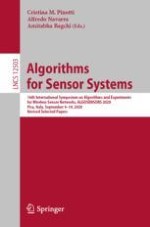2020 | OriginalPaper | Buchkapitel
Efficient Dispersion on an Anonymous Ring in the Presence of Weak Byzantine Robots
verfasst von : Anisur Rahaman Molla, Kaushik Mondal, William K. Moses Jr.
Erschienen in: Algorithms for Sensor Systems
Aktivieren Sie unsere intelligente Suche, um passende Fachinhalte oder Patente zu finden.
Wählen Sie Textabschnitte aus um mit Künstlicher Intelligenz passenden Patente zu finden. powered by
Markieren Sie Textabschnitte, um KI-gestützt weitere passende Inhalte zu finden. powered by
